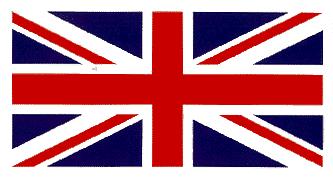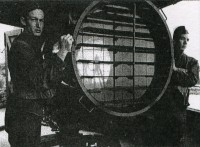THE BERMUDA VOLUNTEER ENGINEERS


In addition to its building projects, the Engineers were also responsible for maintaining a submarine mine defence. To what degree this facility was ever completed, this author does not pretend to know, but the role does complete the traditional job description of the Engineers as a Corp of Sappers and Miners.
The unit of Volunteer Engineers that it had been planned to raise in Bermuda was intended to be tasked with the maintenence and operation of boats used with the submarine mine defences. It would have operated from the Royal Army Service Corps wharfs in St George's and Hamilton. For whatever reason, this unit never came to be, and there would be no engineering component to the Colony's volunteers for another four decades.
By 1930, the Regular Army Engineers had been withdrawn from Bermuda. With most of the major defence work having long been completed, there was no longer a significant role for them within the Garrison, which had been steadily reduced since the 19th Century. By this time, the Bermuda Volunteer Rifle Corps had created its own signals sub-unit. It had been decided that an Engineering unit should be formed to operate electric lamps at the remaining coastal artillery batteries. These would be used to light enemy vessels for night time firing by the Bermuda Militia Artillery who manned the guns. When created, the unit incorporated this Defence Electric Light element with the Wireless element which had been part of the BVRC, and the whole was titled the Bermuda Volunteer Engineers.
Unfortunately, this writer currently finds himself thousands of miles from much of his archive, and can neither recollect, nor locate the date on which the BVE was formed. It was about 1931. The name of the first commander is also beyond recall. The unit was commanded by a major. Its first Second-in-Command was Cecil Montgomery-Moore. Montgomery-Moore had begun the his service in the ranks of the BVRC. During the Great War, he had been given leave to journey to Canada to enter the Royal Flying Corps. Training in North America, he was despatched to join a fighter squadron on the Western Front, where he gained the Distinguished Flying Cross (by that time, the RFC had become, by amalamation with the Royal Naval Air Service, the Royal Air Force). By the start of the Second World War in 1939, Major Montgomery-Moore was the Officer Commanding the BVE.
The BVE had gained a reputaion of exclusivity. Whereas the BVRC had succesfully limited its intake to Whites only, the BVE evidently maintained a glass floor that also excluded members of Bermuda's Portuguese community. With the outbreak of War, the BVEs role expanded rapidly. In addition to providing signals detachments and light crews to the other military units, it provided detachments to the Royal Navy at the HM Dockyard, and to the Royal Air Force at Darrell's Island.
In common with the other two volunteer units, it provided men-four Sappers-to the nominally-BVRC draft that joined the Lincolnshire Regiment in England in 1940.
Early in the War, a flying school was set up on Darrell's Island to train pilots for the Royal Air Force, beginning with donated floatplanes, funded by the Colonial Government, and overseen by an appointed board, the Flying School was taken under the Command of the BVE OC, Major Montgomery-Moore. The school would send 80 Bermudian pilots to the RAF before a surplus of aircrew led to its closure. Major Montgomery-Moore transformed the school into a recruiting agency for the Royal Canadian Air Force, sending 200 aircrew trainees to Canada during the remainder of the War. Another member of the BVE found his way into the air by another route, during the War.
Richard Gorham had enlisted in the BVE in 1938. When the War began, he was part of a draft the unit sent to the Royal Navy at the HM Dockyard. Moving through other postings, he was eventually commissioned. Taking advantage of an Army rule allowing officers to attend any training course, he was sent to England to train as a pilot. The RAF had decided to use Royal Artillery officers to direct the Army's guns from the air, as RAF pilots had demonstrated an inability to fill the role. Having worked closely with directing artillery in searchlight detachments in Bermuda, Lieut. Gorham proved good at his new job, and was responsible for spotting, and directing the destruction by 2,000 allied guns, of a German armoured division, advancing at the battle of Monte-Cassino.
As the War lengthened, the combination of the diminishing ability of the German Navy to project a threat to the Island, and the build up of the US bases after 1941, meant the requirement for the Volunteer units to provide defence rapidly diminished. Other than the draft to the Lincolns in 1940, the local volunteers had been forbidden to send further drafts overseas, but this moratorium was lifted in 1943, allowing both the BVRC and the BMA to raise large contingents to be sent to more active theatres.
When these contingents returned to the Island, after the War, it was to find their units being demobilised. The BMA and the BVRC were both reduced to skeleton operations, though they were soon built back up to useful strengths. The BVE, on the other hand, in a world growing rapidly more sophisticated, were soon without a useful role to play on an Island where aeroplanes were assuming the role formerly played by coastal artillery, and where signals technology was growing far more complex. The task of wireless communications in small military units was moving from specialised personnel with bulky equipment, to handheld radios that could be used by any soldier. At the other end of the spectrum, weekend soldiers could not be expected to provide a useful role in the defence of the island that had largelly been taken over by the United States forces. Although the coastal artillery remained active 'til 1953, it had become obsolete decades before, and largelly excess to need by the end of the War. The role of operating searchlights for these guns had either become similarly pointless through technological advance, or simply wasn't important enough to justify the continuation of a specialist unit.
Unlike its brethren, the BVE didn't simply demobilise at the end of the War, it ceased to exist. Many of its personnel continued to serve, moving to the BMA or the BVRC. Most notable of these was probably Major 'Bubbles' Burnard. Having enlisted in the BVE in 1946, he was still serving in the Bermuda Regiment (formed by amalgamation of the BMA and BVRC) when he died in 1991.